If you’ve conducted any kind of email marketing campaign, you know how important it is to maintain a high ‘click-through rate,’ otherwise knowns as CTR.
After all, there is really no point in having a large list of email addresses if no one clicks on your emails when you send them out.
(New to email marketing? A click-through rate is jsut that: it’s the ratio of users or email recipients who clink on the link or email. But as simple as it sounds, the click-through rate can determine the success or failure of your email marketing campaign.)
If you’re currently struggling with a low click-through rate, whenever you send out an email marketing campaign, you might not know even where to begin to improve your results.
You’ll be happy to know, then, that the process of improving your click-through rate is actually a lot simpler than you might suspect.
In this post, we’re going to take a look at what that process is to get people to email click – and get you the results you desire.
You’ll learn how you can improve your click-through rate for your email marketing campaigns and how you can maintain these results.
By the end of this post, you should be able to understand why you’re currently achieving a low click-through rate, and what changes need to be made to improve your efforts.
Ready?
Let’s begin.
Taking care of fundamentals – creating a good a relationship with your list
As discussed, we’re going to explore the tactics that you can use to improve the email click-through rate for your email marketing campaign.
However, for those tactics to reach their potential, it’s important that you have something that is worth clicking on in the first place.
When promoting something, be sure that it is something people actually care about.
Remember why people signed up to your list in the first place, as well as the kind of person that signed up to your list.
Knowing why they signed up is key. The answer will shape your email campaign and lead to not only a higher click-through rate but also a higher open rate.
You should know the primary type of content that people are interested in and expect from you – and it should be your priority to send them content, or anything else, that aligns with this interest and expectation.
Knowing the kind of person that signed up to your list, is also important, because you can then comfortably send them links that are related to their interests, without it coming off as spam.
Note: A lot of the time, sending ‘related’ items is often important, as it adds another level of value to being a subscriber.
You also want to ensure that you don’t make promises in your emails that aren’t fulfilled when people click.
If you make false promises, you may experience a high click-through rate, initially, for your campaigns. But, over time, your numbers will dwindle and you’ll find it tough to bring them back up, as you’ll have lost some credibility.
If you can consistently take care of those issues, you’ll build a good relationship with your list.
In doing so, you’ll ensure that anything we cover next is going to work more to your favor.
Now, with those fundamentals covered, let’s talk about the purpose of this post: Improving your click-through rate.
Include a clear call to action
One of the most important steps that you can take, in order to improve email click-through rates, is to use a clear and obvious call to action.
A call to action is essentially when you tell someone to do something.
When it comes to marketing, it’s always a bad idea to assume that people are going to do what they should do (from your perspective).
Indeed, you have to make it very obvious what you want people to do and then make sure that it is easy for them to complete that task.
Keep in mind, that the way that you format your email can have a big impact on how people perceive and interact with your call to action – a point we will cover later.
But, for now, let’s go through some concepts that you need to acknowledge, when it comes to using a call to action within email marketing.
The first idea that you need to keep in mind is that it is important that you have one unique call to action that people can click on and not multiple options.
Why? Because you should only give people one thing to do.
Each and every email that you send should have just one goal in mind in regards to what you want your subscriber to do.
Now, of course, you can place multiple call to action links within an email – but you need to make sure that all of these calls to action requests ask people to do the same thing.
Below is an example of how the use of a ‘single purpose call to action’ lead to 27x more than the original response that was produced by the campaign.
In another example, it can be seen that the use of a single call to action (the image on the left) increased the click through rate by 371% and sales by 1617%.
You should assume that a) people are busy, and b) some may be lazy. If you give them too many things to do on one page, there’s a good chance they’ll do nothing at all.
Bottom line – don’t distract people with links that don’t contribute to the singular goal that you have for that specific email.
You also need to make sure that your call to action clearly portrays the result of clicking.
You can do this by either explaining the benefit of clicking on the call to action, or you can just state what your offer is.
So, if I were promoting an SEO report, I could say:
‘Get my Free SEO Report Today’ or ‘Teach me How to Get on Page 1 of Google.’
You’ll want to experiment with both approaches, as both influence in different ways. Which one works best will depend on the kind of people on your list.
It’s worth noting, however, that you could use both, within the same email.
If they both link to the same thing, you might be able to influence different personalities on your list, by using both approaches.
It’s important that you don’t use bland language, when describing the benefit on offer and you may notice this, when looking at the examples above.
There are two emotions that you should aim for, when writing your a call to action – urgency or curiosity.
Both are extremely powerful, when it comes to influencing people.
Here are some words that invoke curiosity –
And, here are some words that invoke urgency –
Make use of these words in your call to action and you should experience an increase in your click-through rate.
You may also want to experiment with the design of your call to action.
As shown in the examples above (and later on in the post), you’ll notice that by making the call to action a ‘button,’ it stands out a lot more.
This, of course, attracts more attention and can noticeably improve your email click-through rate.
Paying attention to how you format emails
The way that you format your emails can also have a massive impact on your click-through rate.
It’s worth noting that your style of formatting is going to depend on the industry that you’re in and what you’re looking to promote (or get people to email click on).
Most marketers will find that ‘single column’ formatting works best for them.
Campaign Monitor is an example of how well a change in formatting can work.
They managed to achieve a 127% increase in their click-through rate, by redesigning their email so that it followed a highly obvious, single column format.
Here’s what it looked like before.
And, here’s what it looked like after –
Now, you could argue that their previous email followed a single column format, but it’s hard to deny that the second version really places an emphasis on being ‘single column.’
By formatting their email the way that they did, the text is easier to read and the call to action is more obvious and, therefore, more ‘clickable’ than it was before.
This call to action is also made more visible, because it’s been reformatted as a button.
Let’s take a look at another example of how single column formatting can make a big difference and encourage a higher email click-through rate.
Process Street’s initial emails looked like this –
This email didn’t produce great results, and the click-through rates were understandably low.
However, by making some changes (in line with what we’ve covered already), their final iteration ended up looking like this.
And, the results speak for themselves…
Their changes lead to an overall improvement in their click-through rate of 842%.
Of course, if you want ‘single column formatting’ to work exceptionally well, you need to pay attention to a few other things.
For example, it’s important to make it so that your email is easy to scan. Click-through and open rates improve when your content is consistently succinct and scannable. You can do this by breaking up the text into easy to read paragraphs and with the use of ‘buttons’ – as shown in the image above.
Single column formatting can work for ecommerce stores too. Below is an example.
Note: Earlier, I touched upon the importance of having a singular call to action within an email. However, sometimes, with an ecommerce store, you will need to provide people with multiple calls to action within the same email.
When this is the case, it’s key that you make things as simple and as clear as possible.
The best way to do that is by having an explicit call to action for each section. Making your formatting simple is important, too, as you need to emphasize the options that are found within each email section, in order to reduce confusion.
Here’s an example, from J. Crew, on how you can achieve that.
And, another example, from JackThreads.
Provided that your calls-to-action are explicit and your email formatting is clear, you should fair better, when providing email recipients with multiple things to click on within in your email.
Having a strong willingness to test
If you want to improve your click through rate, you’ll also want to develop a healthy willingness to test.
That means that you’ll want to experiment with all of the things that we have covered in this blog post…and then some.
You may, as discussed, want to experiment with using different forms of language, when writing your call to action.
You might also want to consider trying out different types of formatting.
When you notice that there is an increase in your click-through rate, there’s a good chance that you’re doing something right.
Of course, there are other things that you can experiment with, too.
For example, you can also experiment with the time that you send your emails.
If you can send your emails at a time that’ll increase your open rate, you’ll increase your email click-through rate as well.
Sometimes, people may not open your emails simply because they were sent at an ‘inconvenient time,’ and hence were buried in their inbox.
If you send your emails at the right time, more people on your list will be aware of them, will have the chance to open them and then will subsequently click on any of the links inside.
Proportionally, clicks might stay the same, as you’re not technically changing the email itself – but the raw number of people clicking links will likely rise, as more people are actually opening the email.
There’s no set time of day that works across the board to increase your open rate.
In fact, if you take a look at the chart below, you’ll see that open times vary, depending on profession.
Because of this, you’ll need to test send times – like everything else.
Send out different campaigns at different times. Eventually, you’ll begin to notice some patterns, as to which times work best.
Conclusion
Email marketing is a great way to distribute your marketing efforts and reach a lot of people at the same time.
However, for a lot of people, email marketing is only worth the time and effort if they can get people to click on the links found within the email.
If you previously struggled with a low click through rate, you should now have a better sense of how you can improve your stats.
Whether you work on improving your call to action or you decide to change the formatting, it’s important to begin implementing changes to your email marketing campaign today to see a change in your open rate and click-through rate.
Keep in mind that other factors play a role in your open rates and email click-through rate. Chief among them? The power and importance of an enticing subject line. The subject line should be carefully crafted to excite your subscriber to get that email open and discover the gems that rest inside.
Do you have any tips that you can share on improving the click-through rate for an email marketing campaign? How do you come up with a great subject line? Please let me know in the comments below!




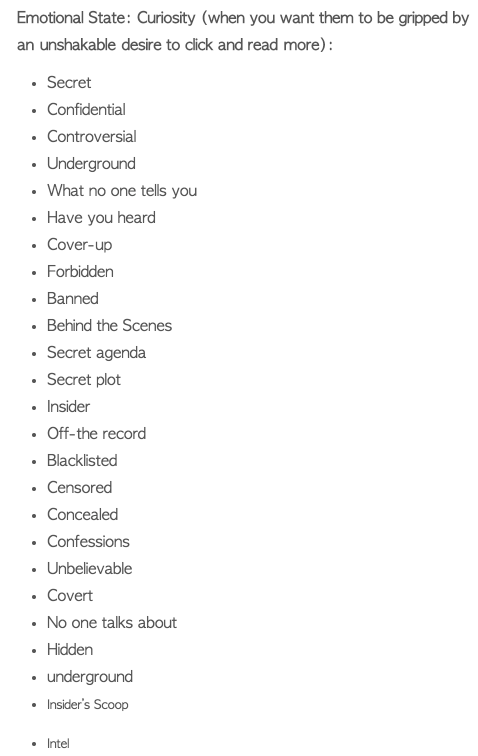

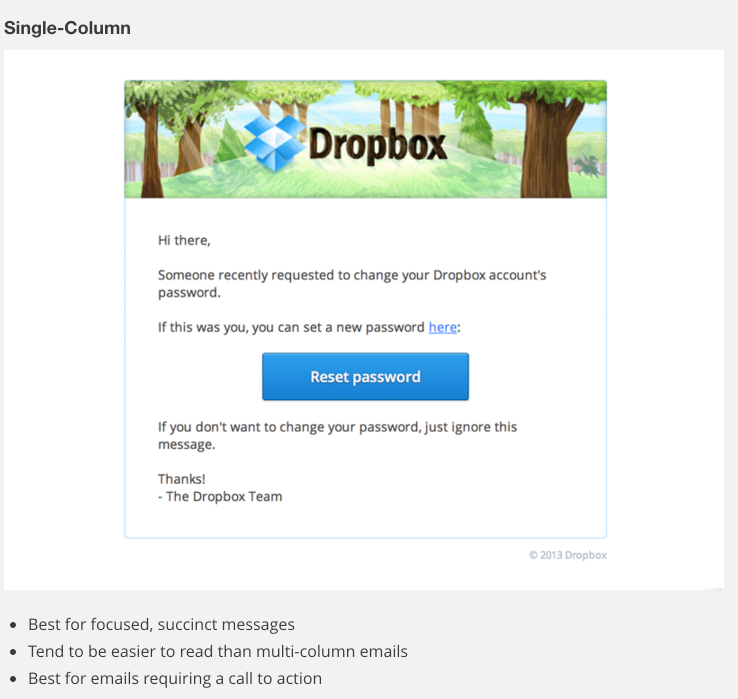
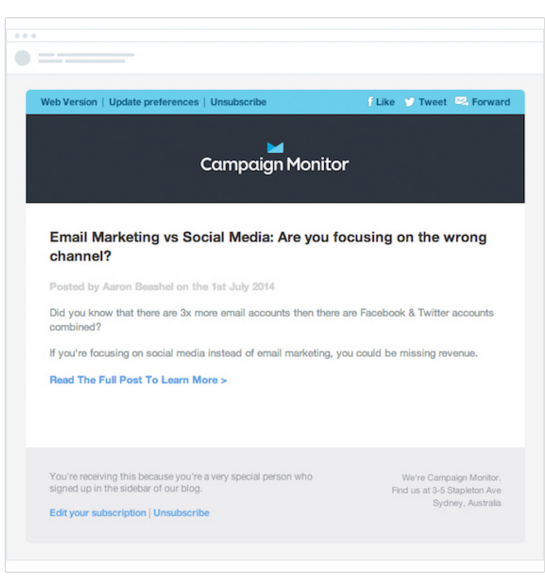
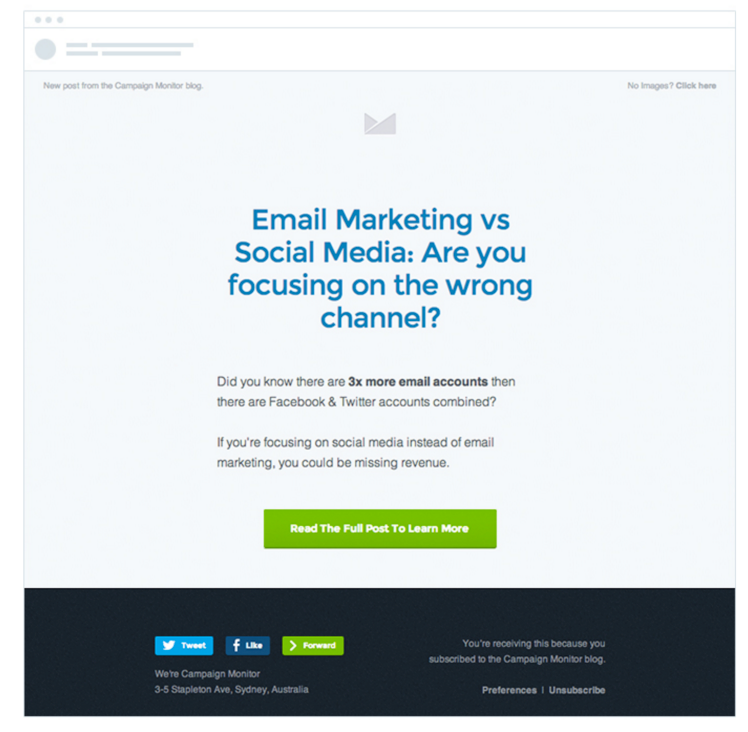
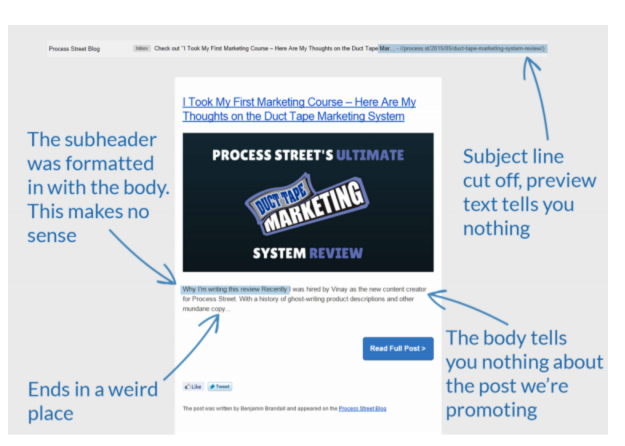







Comments (24)